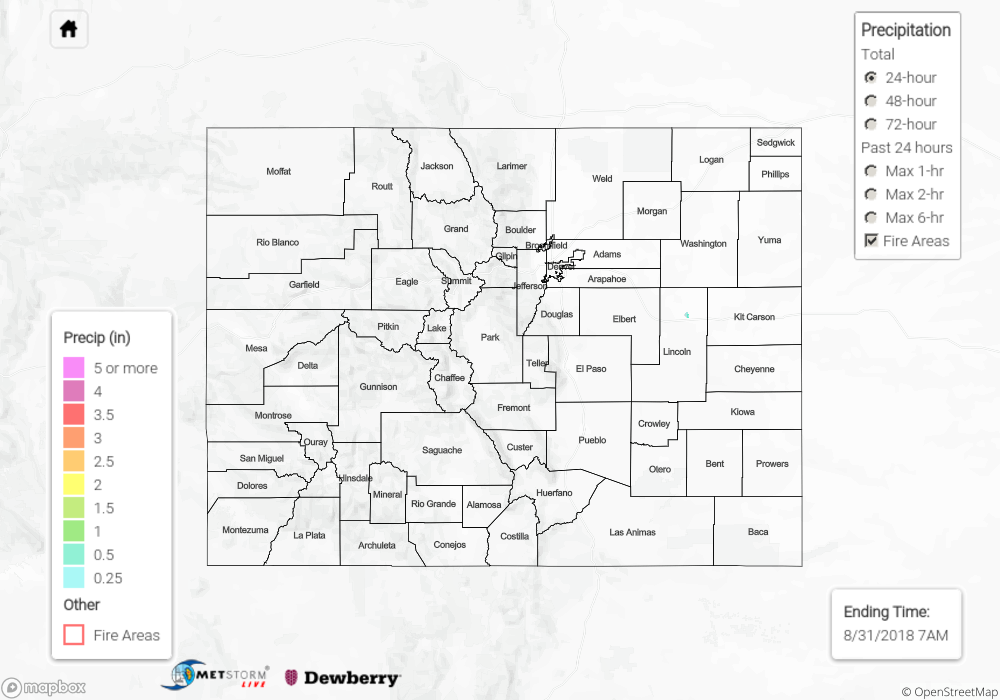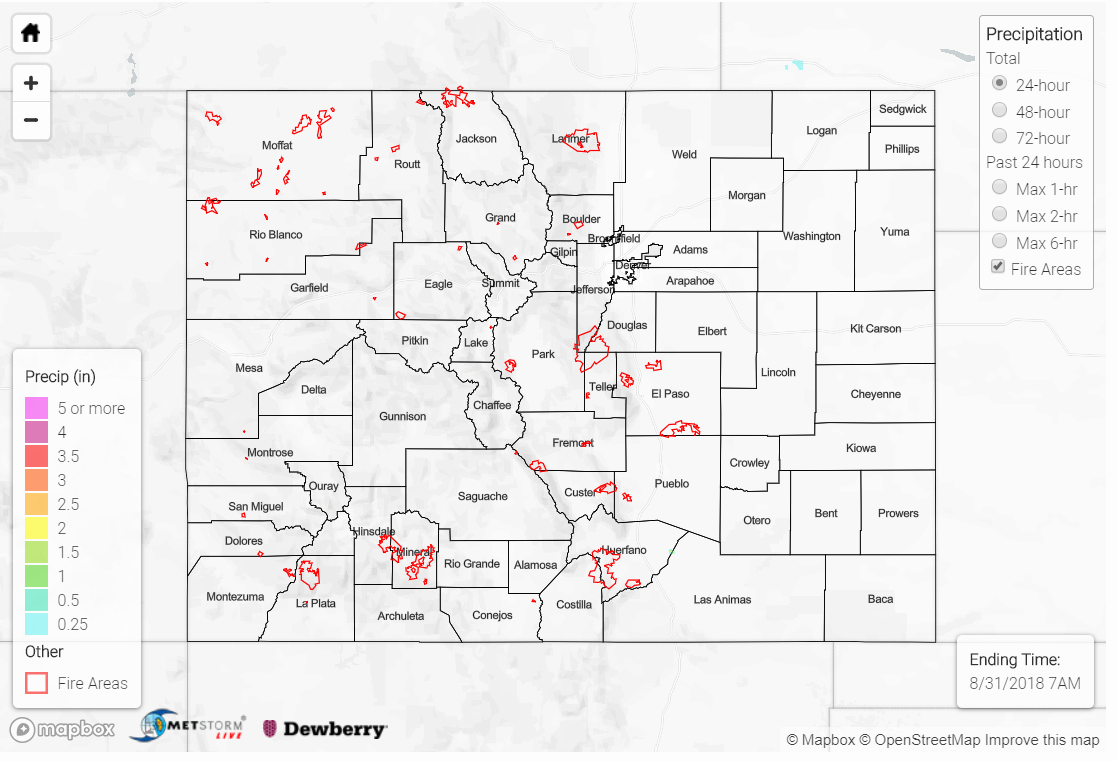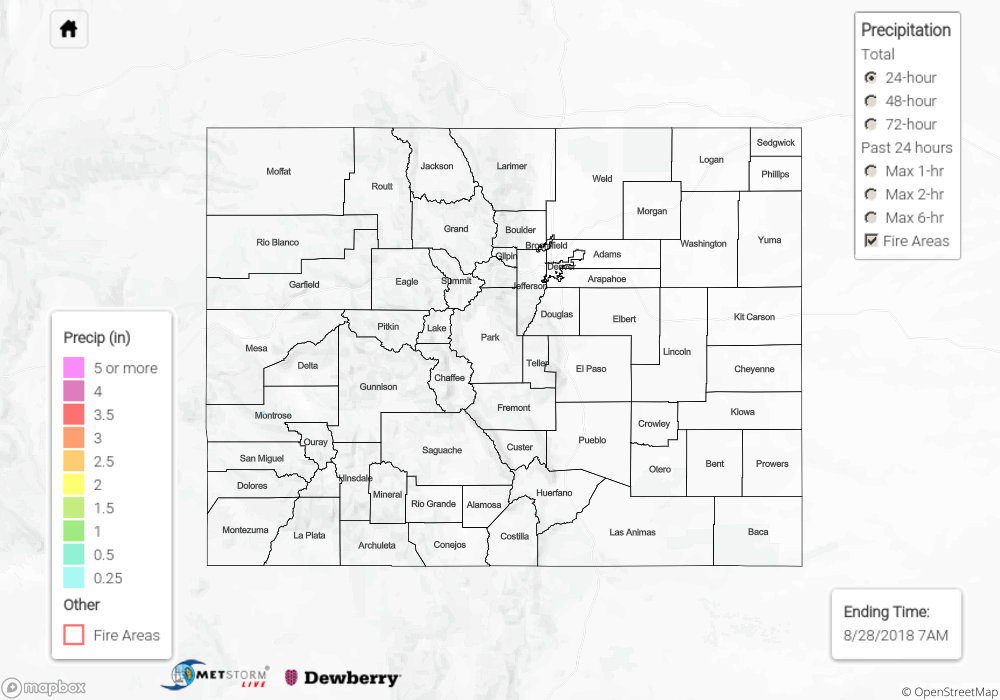Issue Date: Thursday, August 31st, 2018
Issue Time: 10:00 AM MDT
Summary:
August 30th was another dry, windy day, with temperatures at or above average nearly everywhere across Colorado. As has been the pattern over the past few days, Thursday was even less smoky than it has been since last weekend. Ample sun mixed with an overhead shortwave lead to the development of large cumulus clouds that threatened, but rarely delivered, rainfall. Despite gusty winds throughout the day underneath thunderstorms across the Northwest Plains and across the eastern part of Colorado, there were no wind storm reports. No flooding was reported on Thursday.
Click Here For Map Overview
Note: We have identified a possible underestimation in QPE over the southwest part of the state. We are working to on this issue, and will provide an update as soon as possible.



